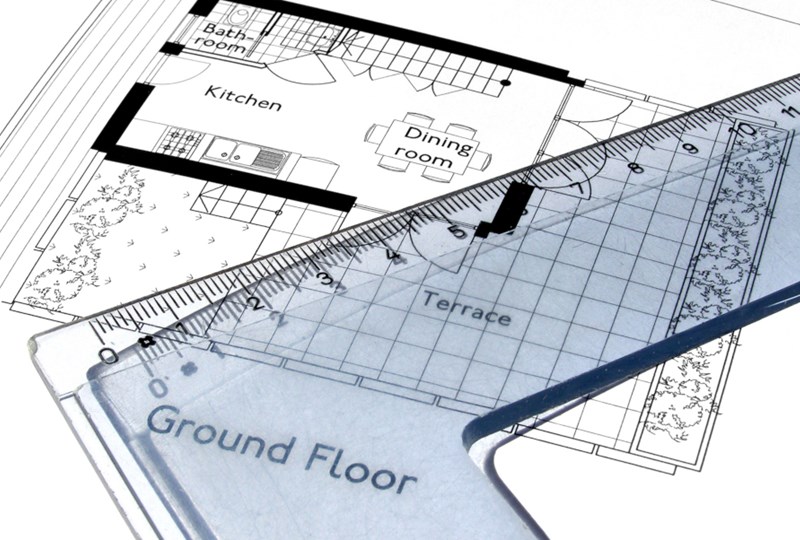
Key insights
- Starter homes are in high demand, so why aren’t builders building less expensive homes?
- In addition to land, labor and building materials, builders have to factor in regulatory fees when determining their developments.
- High regulatory fees can also make it difficult for builders to add any new construction in the starter home price point.
The median home price of a Twin Cities single-family home rose to $285,000 in July — but many buyers are still hoping for a starter home in the low or mid-200’s. The competition in these lower price points is fierce, with buyers snapping up properties in days or even hours.
So why, even with the consistently growing demand for these lower-priced homes, are there so few new construction options for this demographic of buyers?
The short answer is that between materials, labor, land and required permits, many builders simply can’t afford to build anything in that price range. Let’s explore why.
The cost of building a new construction home
When building new construction, builders have to first consider the cost of land. Builders may purchase large plots of land, where they plan to put up communities with hundreds of homes. In other cases, they may buy a smaller plot of land with plans for just a few homes. As with any real estate transaction, plots closer to the city or with good commute potential tend to be more expensive than rural plots.
Builders must also take into consideration the materials and labor required to build each property. There are hundreds of tasks that must be completed for each home; builders hire contractors and specialists who complete everything from laying foundation to custom-building cabinets to wiring the home for electricity.
In recent years, builders have seen a labor shortage. Commercial and residential new construction has been rising steadily as the economy has gained steam, but many of the workers who left the industry during the recession have not returned to their previous line of work. With this labor shortage and (to a lesser extent) the rising costs of materials, a recent report featured in an article by MinnPost shows labor and materials costs in the Minneapolis metro area have gone up by a third since 2009.
And then there are the regulatory channels. In both Minnesota and Wisconsin, the builder needs to get a permit to build. They’ll also work with the natural resource department(s) to review potential issues related to stormwater, wetlands and watershed. They may also need to work with the park department to pay park fees or even build a new park for the community.
All of these costs add up, and in Minnesota, they can add up to between 20-30% of the total cost of a new construction home, according to the Star Tribune. In Wisconsin, the regulatory costs tend to make up less of the total cost.
The cost of building in Minnesota vs. Wisconsin
According to a recent study from Housing First Minnesota, a homebuyer purchasing a new construction home in Wisconsin could save tens of thousands of dollars over a homebuyer purchasing the exact same property in Minnesota.
From Kare 11 News:
“Housing First Minnesota partnered up for a study about this topic and broke down the estimated cost of a new house in Corcoran, Minnesota. The estimated construction cost is $182,000. The administrative costs that go into it were estimated at $56,000. The total cost of the home came in at $372,000.
“The study estimated the exact same build in the community of Hudson, Wisconsin and the total price was $43,000 cheaper, with the savings split between land and administrative costs.”
In other words, Wisconsin land tends to be cheaper and their regulatory fees are less expensive, too. Overall, it means that Wisconsin buyers may be able to access a wider variety of affordable housing options than Minnesota buyers.
Need to find a starter home?
At Edina Realty, our agents work every day to help buyers within every budget. We’re confident that we can help you find your dream home, whether it’s a stunning new construction property or an historic home with plenty of charm. Reach out to Edina Realty or your agent today to get started.
For even more insights on the process of buying a home, follow #BuyerInsights on Facebook, Instagram and Twitter.









 ©2025 Prosperity Home Mortgage LLC®. (877) 275-1762. 3060 Williams Drive, Suite 600, Fairfax, VA 22031. All first mortgage products are provided by Prosperity Home Mortgage, LLC®. Not all mortgage products may be available in all areas. Not all borrowers will qualify. NMLS ID #75164 (For licensing information go to: NMLS Consumer Access at
©2025 Prosperity Home Mortgage LLC®. (877) 275-1762. 3060 Williams Drive, Suite 600, Fairfax, VA 22031. All first mortgage products are provided by Prosperity Home Mortgage, LLC®. Not all mortgage products may be available in all areas. Not all borrowers will qualify. NMLS ID #75164 (For licensing information go to: NMLS Consumer Access at